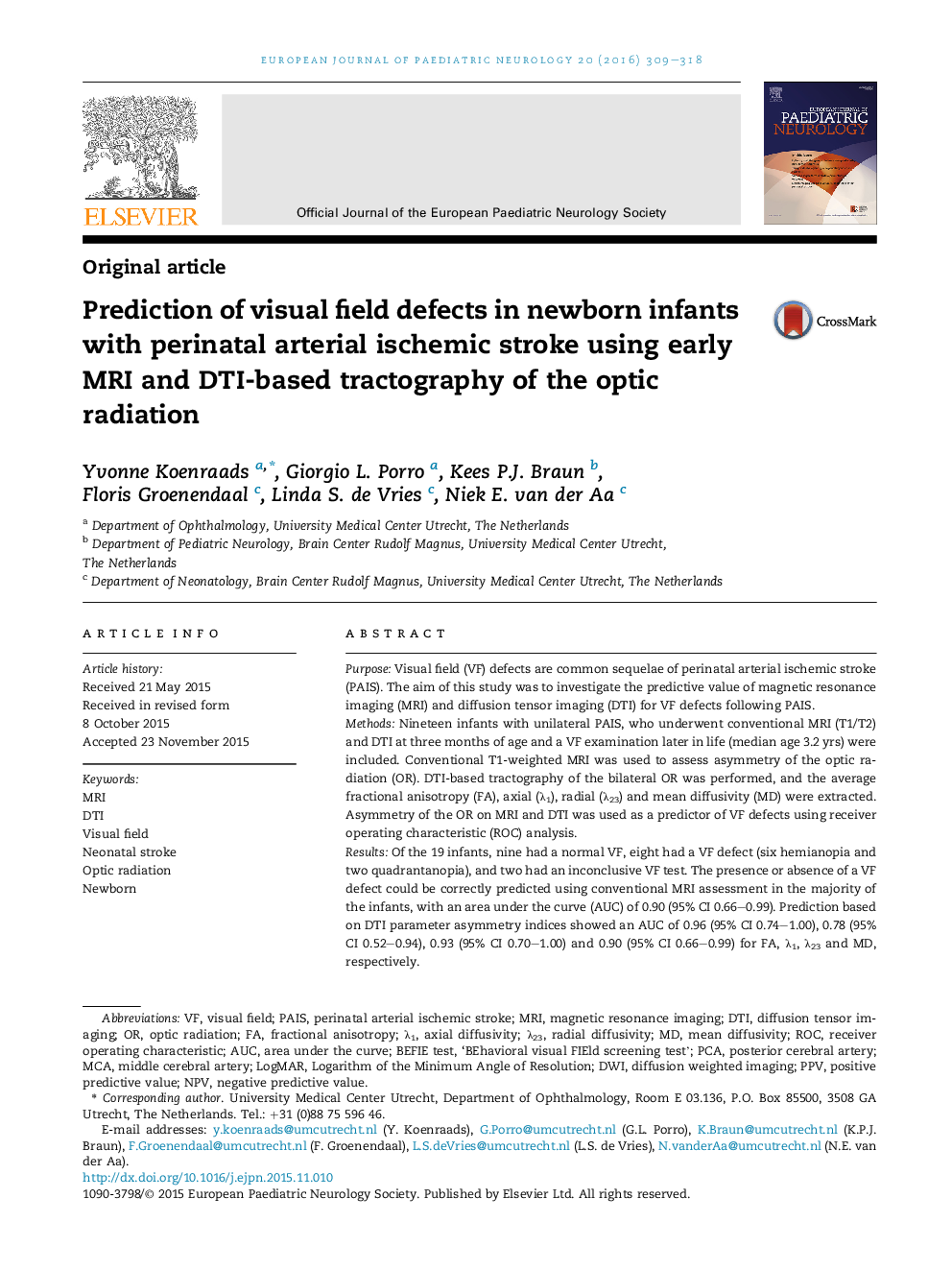| Article ID | Journal | Published Year | Pages | File Type |
|---|---|---|---|---|
| 6016580 | European Journal of Paediatric Neurology | 2016 | 10 Pages |
â¢Prediction of visual fields after perinatal stroke can be investigated using MRI & DTI.â¢Asymmetry of the optic radiation on both MRI and DTI predicts VF defects.â¢Prediction based on MRI-T1 assessment seems comparable to DTI-based prediction.
PurposeVisual field (VF) defects are common sequelae of perinatal arterial ischemic stroke (PAIS). The aim of this study was to investigate the predictive value of magnetic resonance imaging (MRI) and diffusion tensor imaging (DTI) for VF defects following PAIS.MethodsNineteen infants with unilateral PAIS, who underwent conventional MRI (T1/T2) and DTI at three months of age and a VF examination later in life (median age 3.2 yrs) were included. Conventional T1-weighted MRI was used to assess asymmetry of the optic radiation (OR). DTI-based tractography of the bilateral OR was performed, and the average fractional anisotropy (FA), axial (λ1), radial (λ23) and mean diffusivity (MD) were extracted. Asymmetry of the OR on MRI and DTI was used as a predictor of VF defects using receiver operating characteristic (ROC) analysis.ResultsOf the 19 infants, nine had a normal VF, eight had a VF defect (six hemianopia and two quadrantanopia), and two had an inconclusive VF test. The presence or absence of a VF defect could be correctly predicted using conventional MRI assessment in the majority of the infants, with an area under the curve (AUC) of 0.90 (95% CI 0.66-0.99). Prediction based on DTI parameter asymmetry indices showed an AUC of 0.96 (95% CI 0.74-1.00), 0.78 (95% CI 0.52-0.94), 0.93 (95% CI 0.70-1.00) and 0.90 (95% CI 0.66-0.99) for FA, λ1, λ23 and MD, respectively.ConclusionsVF defects following PAIS can be reliably predicted by assessment of asymmetry of the OR at three months on conventional MRI and DTI-based tractography with comparable predictive values. Conventional T1-weighted MRI can be used in clinical practice.
